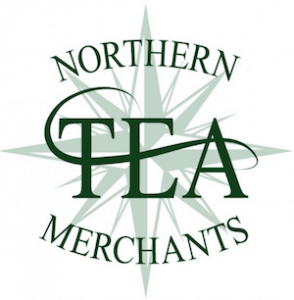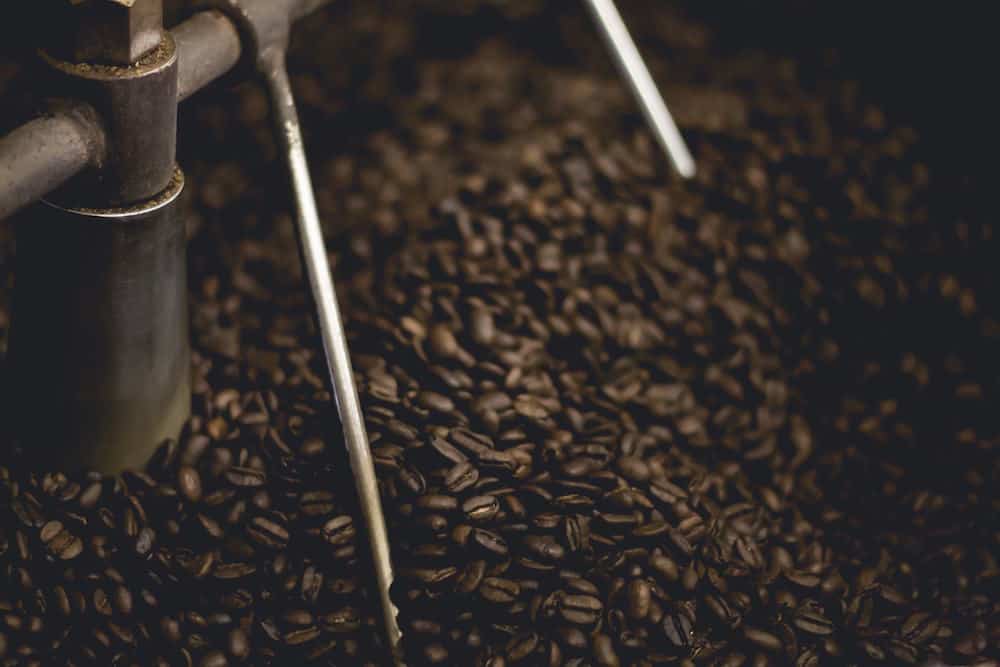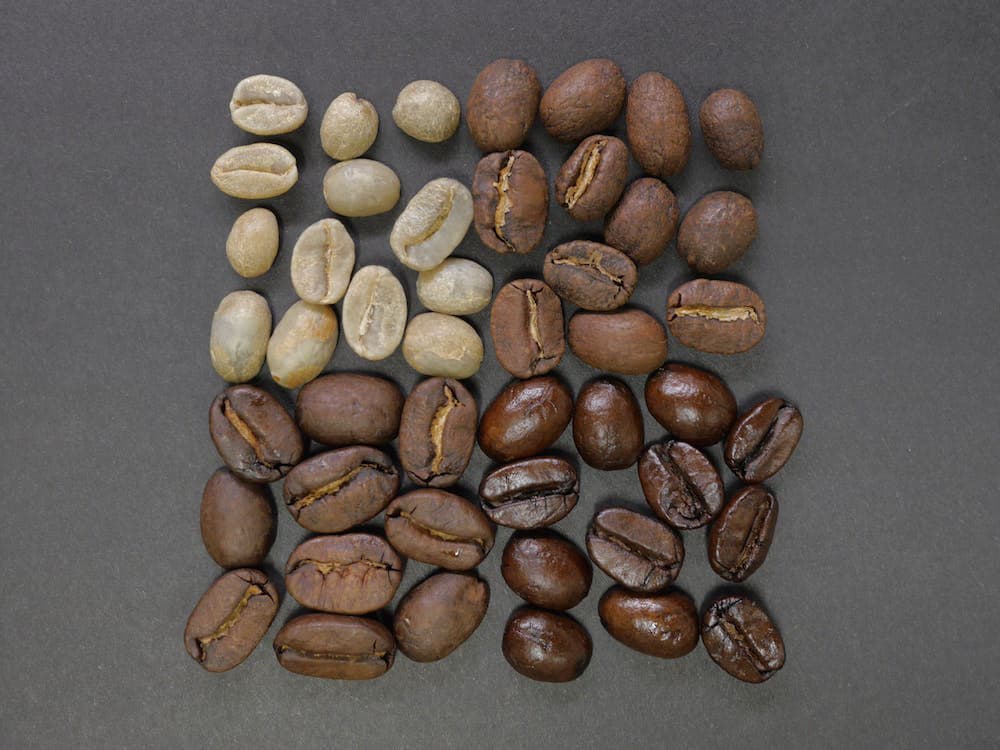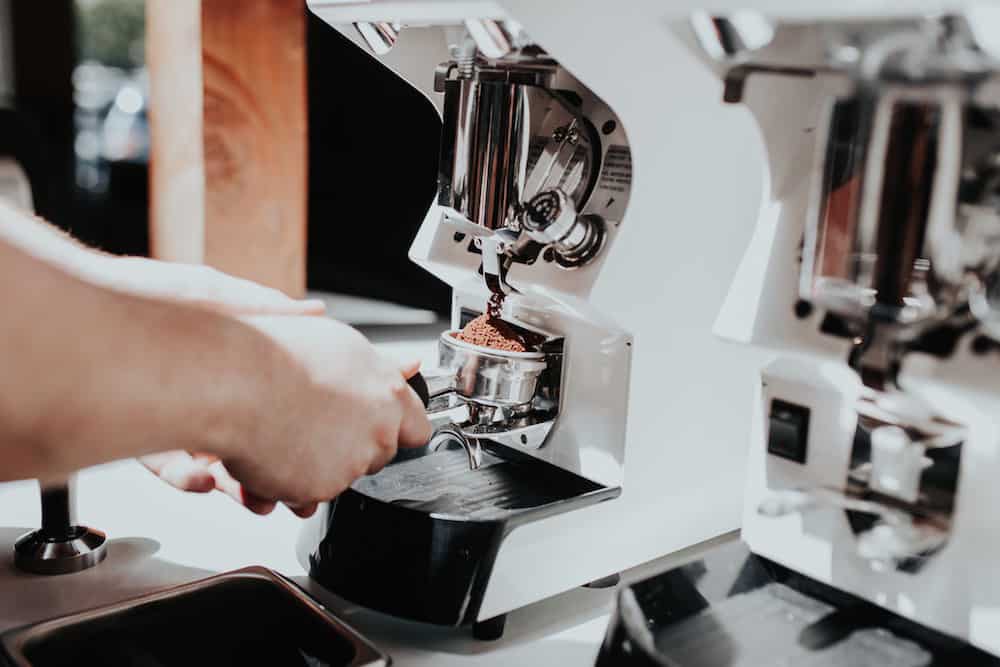Here at Northern Tea Merchants we roast coffee daily. You cannot buy coffee fresher than ours. We possess two coffee roasters, one of which is used to prepare samples and has only a 227g capacity.
Our main roaster, originally built in 1959, now modified extensively to our demanding specifications, roasts 70kg in approximately 20 minutes, and produces no roast smoke due to an afterburner we fitted in 2000. We regularly roast over 1 tonne of coffee per day!
The Coffee Roasting Process Follows this Pattern…
- The green, unroasted coffee beans are loaded into the Entecon lifter and conveyed into the upper hopper of our roaster.
- The loading hopper door is opened, allowing the green beans to enter the rotating inner drum.
- Flame is applied to the drum, allowing the beans to commence roasting. (The two gas burners that we use apply approx. 50kW per burner of heat to the drum, bringing 70kg of coffee to optimum temperature (190 – 200°C) in about 20 minutes!)
- During the roasting process, regular samples are taken from the drum to verify the depth of roast of the beans. Every sack of coffee roasts differently. This can be due to the differing water content in coffee beans, bean size, the time of year at which the bean was harvested or how long the bean has been in storage before it arrives at Northern Tea Merchants (see Old Brown Java, for example).
- Once the beans are roasted as desired, they are ejected into a cooling tray. It is important to cool coffee beans very rapidly as when they are first ejected, they are so hot that coming into contact with air can make them catch fire! The cooling tray works on the principle of rotating arms that ‘stir’ the coffee. This keeps the beans moving so they do not ignite. A system of air ducts in the base of the tray also pulls cool air through the roasted beans.
- Once cooled, the coffee beans are loaded into either our coffee bins in the shop, for sale to our many satisfied retail customers, or are immediately ground, packed and distributed by our vans to many hotels, restaurants, cafes and bistros, Stately Homes, wholesalers and retailers and other commercial outlets throughout 100 mile radius of Chesterfield.



